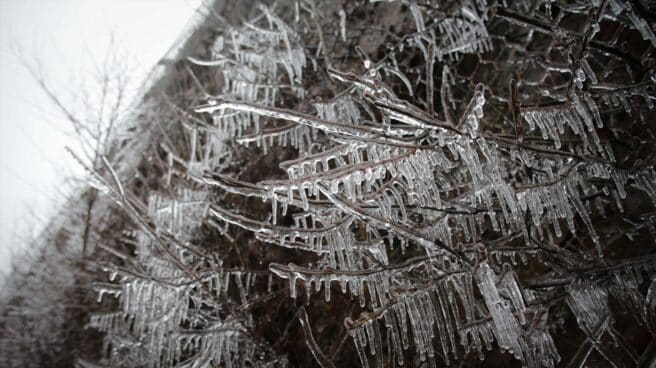

A bush with frozen branches in Becerra, where the temperature dropped to -5ºC on January 23.
The State Meteorological Agency (AEMET) has decided to respond to the avalanche of news that some media publishes for several weeks about cabanuels. a supposed weather prediction method that has gone viral over the past two years despite lacking any scientific rigor. Through their Twitter account, the agency has created an extensive thread of 30 tweets in which they detail the complex scientific process they use to predict the weather and the unsolvable constraints they are currently presented with.
“After Philomena’s passing, there has been an increase in disturbing information and headlines, in addition to the use of false predictions based on pseudoscience. We’re going to talk about the risk this could pose to the public and the uncertainties in the forecasts,” a Twitter thread began referring to Jorge Rey, a 16-year-old from Burgos who allegedly predicted Filomena’s arrival. storm in January 2021 using cabanuel and since then it has been widely reported in the media with each new forecast.
AEMET, however, refutes this news, assuring that “There is no record of Philomena’s divination based on cabanuels.” although many people continue to “take the story for granted”, which they say “discredits meteorologists and those involved in weather information”.
Equations without solutions
In successive tweets, AEMET indicates that they “They are not vigilant, trembling with fear or showing anxiety, as some of the headlines say.”but simply to issue meteorological risk warnings based on forecasts and reports, which bodies like Civil Protection can later convert into warnings.
As they explain, the only way to properly study the atmosphere is through science: “The most basic physics tells us that it is a fluid and its motion is some equations that have no solution, the Navier-Stokes equations”, considered one of the mathematical problems of the millennium, for which everyone who manages to solve them is assigned a prize: $ 1 million. Also, since this is a chaotic system, they elaborate that “small changes in the initial conditions make the expected evolution quite different.”
64,000 people will predict the weather around the world
The complexity of the equations requires “knowing the current state of the atmosphere on a scale of hundreds of kilometers and at different points,” which for meteorologist Richardson would mean that 64,000 people would need to work from a shared path to predict weather for the entire planet. For this reason, it is necessary to use computers, of which AEMET is an example, although they also have limitations.
This level of difficulty makes AEMET work with probability, which means that forecasts need to be updated from time to time to the possibility that any small change will cause big changes in meteorology.
This leads to the danger of paying attention to pseudosciences such as cabanuel, which, although using very general and vague predictions (which are easily consistent with what happens in the end) “They can cost lives when extreme weather events occur if the population does not trust warnings and alerts.”
“A cabanuela-type idea can fail, as can weather models.” It’s as serious as saying, “I don’t take medication because it doesn’t always work.” Meteorological models and science allow us to know what is wrong and what can be improved,” explains AEMET. And they add: “Two-week forecasts and seasonal estimates of trends rather than precise measurements and the use of probabilities and uncertainties.”
The branch ends with an appeal by the state body to the media with a demand “avoid disturbing headlines” and “stop voicing pseudoscience because it leads to more distrust and discredit of the meteorological profession.”
Source: El Independiente